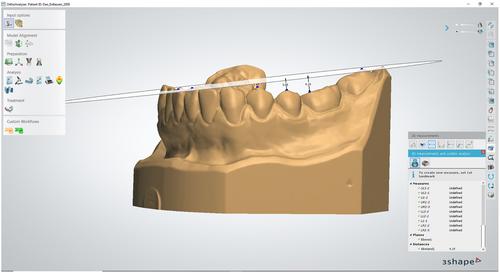The curve of Spee is deemed important characteristic of the dentition for a balanced occlusion and distribution of masticatory forces, while orthodontic levelling of an accentuated curve of Spee is generally included as a treatment goal for deepbite correction. However, relapse is often seen and can be problematic.
A retrospective longitudinal study of predominantly young patients with a deep curve of Spee, who had been treated orthodontically with 0.018”-slot Edgewise fixed appliances, was performed. The depth of the curve of Spee was digitally measured before treatment (T1), at debond (T2), and an average of 7 years post-debond (T3) and analysed statistically at 5%.
A total of 157 patients were included (56.7% female; 11.6-year-old at T1), 16.6% of which were treated with premolars extractions. Non-extraction treatment reduced the curve of Spee at the first premolar from 1.87 mm (T1) to 0.22 mm (T2), which relapsed 0.12 mm (T3; P = .04). The respective depths for the second premolar were 2.0 mm (T1), reduced to 0.80 mm (T2). No significant relapse was seen for the second premolar (0.08 mm; P > .05) or the first permanent molar (0.06 mm; P > .05). No overall significant differences in absolute relapse were seen between extraction and non-extraction patients, but premolar extractions were associated with less clinically relevant relapse at the first molar (odds ratio 0.27; 95%-confidence interval 0.08-0.88; P = .003).
Steep curves of Spee can be satisfactorily levelled orthodontically with satisfactory stability in the long term, while premolar extractions might be associated with less relapse.



